

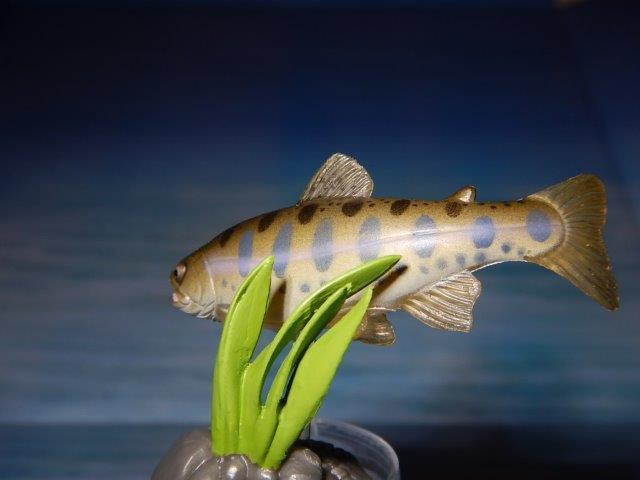
This figure is the Cherry Salmon (sakura masu in Japan, meaning cherry troug; the landlocked form is known as Yamame), Oncorhynchus masou masou, number 03 from the first series. This salmon is a widespread, anadromous subspecies found along the Pacific Coast in Japan and Korea. Not surprisingly, Cherry Salmon are fished commercially and as game fish. TL of the Cherry salmon is 35cm.
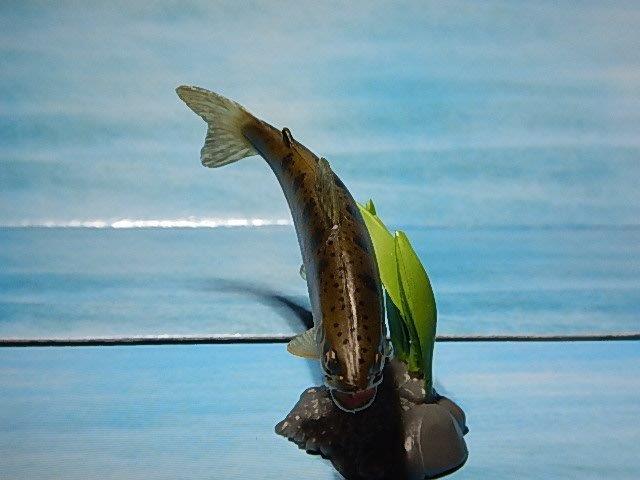
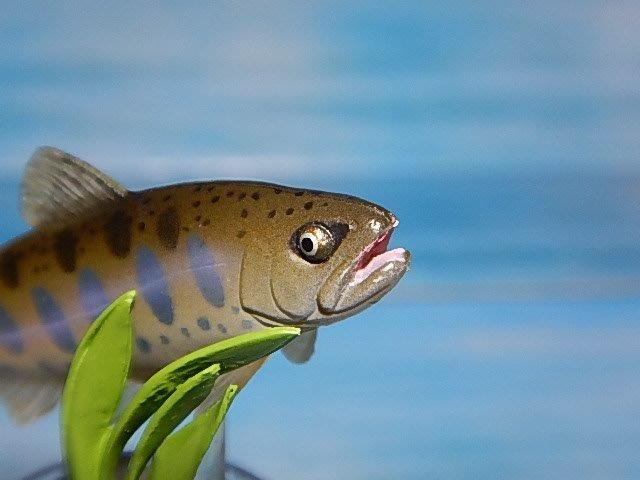

This model is about 6 cm long, making the figure roughly 1:6. It is in a basic swim pose, and has the very characteristic salmonid look—complete with open mouth, probably looking for food. The colouring is detailed, and if we are being picky, lacks the darkened back and redder splotches of a fully mature individual. This one is on the grey river rock-with-plant base. Overall the figure has a somewhat calm demeanor compared to some of the Yujin fish. As will be a running theme with many of the Japanese fish in the Yujin series, this species has shown up in other Japanese lines, although I am not 100% certain of this particular subspecies (I know that the biwa trout, Oncorhynchus masou rhodurus, has shown up in other sets, for example).


Cherry salmon (or cherry trout) is the name given specifically to this subspecies which is the most widespread and relatively common; there are several others throughout the range at varying levels of conservation status. They tend to prefer cooler waters, and can be found in streams and lakes; sea-going populations tend to be within 200 metres of the surface. The cherry salmon subspecies (like the ones that are not landlocked) is anadromous, and so heads out to sea to continue to mature. They are predatory animals, feeding primarily on crustaceans, although small fish will be taken as well. When it is time to breed adults will head upstream. Males especially undergo significant morphological change at this time.
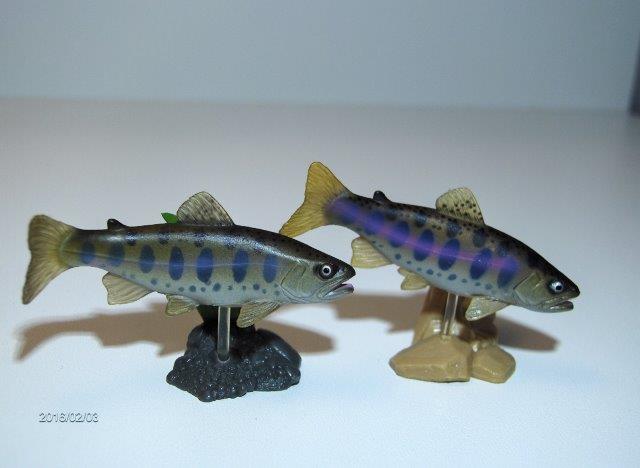
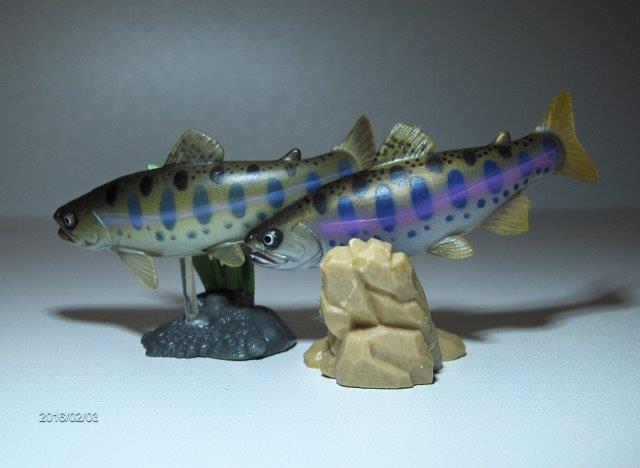
Later, I added on to the post when I received a second version of the same figure. I made some errors in the description. Unlike the other comparisons of Yujin fish models that I’ve done, this one does not show a Release 1 and Release 2. Instead, they are very distinct variants of the same figures from the same Release (I know they are both Release 2 because they both came sealed with their papers). (The preceding is incorrect, the darker pink band is a revised-release model – I was not aware at the time of the 3 different Series 1 releases)

At first I thought the newer, brighter one may have been a chase variant—a figure of the Amago, a distinctly Japanese freshwater subspecies O. masou ishikawae or O. masou macrostomus. This does exist as a figure, although not necessarily as expensive as some of the chase variants can be. However, my newer one, like my original, has no small red spots alongside the scattered dark spots (which is characteristic of Amago). But it does have several distinctly different features. The most noticeable difference is the very deep, bright pink longitudinal band along the lateral line—it is far brighter and wider than my original, where it is very subtle. There is also some difference in the fins, with the newer figure having darker yellow fins than the original. The body is also shaped somewhat differently.

Just to add on, one more thing that I learned is that the two variants indicate different life stages of a cherry salmon. Apparently, as the fish matures fully, the pink band along the side darkens and broadens. This would indicate that the revised-release version indicates a mature adult (but not a breeding adult–that’s coming soon ;)!
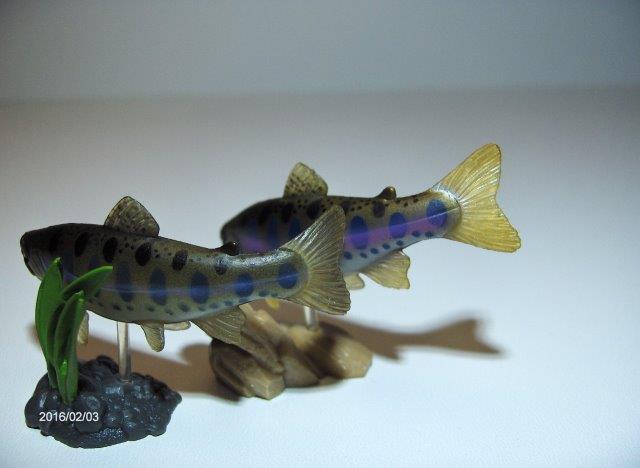
Starting on the 14th of January, 2024, I migrated my first Yujin Freshwater Fish Pictorial walkaround post from the Animal Toy Forum to this blog, with the intention of moving all species’/figures’ walkarounds here. The initial post contained a lengthy explanation of the series (both the original and updated) that I don’t think should be repeated each time! For those details, the post can be seen at the first post. Then we can just get to the fish. Most of the details and writing will come from the original post, although I may supplement/add where appropriate.
Disclaimer: links to Ebay and Amazon on the AnimalToyBlog are affiliate links, so we make a small commission if you use them. Thanks for supporting us!



